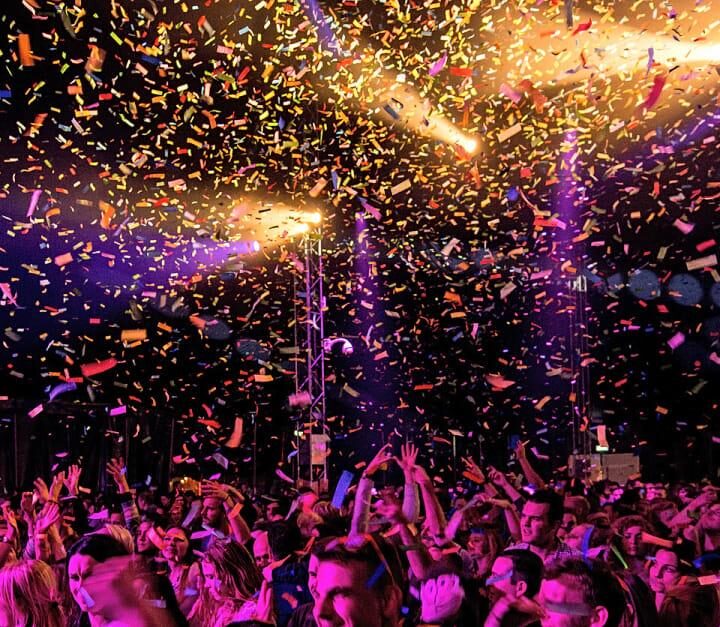The iconic Tour Eiffel, known worldwide as a symbol of romance and Parisian charm, holds a rich history that dates back to the late 19th century. So, when was Tour Eiffel built? This question has intrigued history buffs and travelers alike for years. Designed by Gustave Eiffel and his team of engineers, construction of the Eiffel Tower began in 1887 and was completed in 1889, just in time for the 1889 World’s Fair held in Paris. With its intricate iron lattice work and breathtaking views, the Tour Eiffel stands as a testament to human ingenuity and architectural brilliance.
Introduction: Exploring the Iconic Tour Eiffel
Known as one of the most iconic landmarks in the world, the Tour Eiffel, or Eiffel Tower, is a symbol of Paris, France, and a masterpiece of architectural ingenuity. Construction of this magnificent iron lattice tower began in 1887 and was completed in 1889. Designed by Gustave Eiffel’s engineering company, the tower was initially criticized by some for its bold design but has since become a beloved symbol of Paris.
Architectural Marvel
The impressive structure stands at a height of 1,063 feet, making it the tallest building in the world until 1930. It consists of three levels that offer breathtaking views of the city, attracting millions of visitors annually. The intricate lattice design and strategic placement of the tower make it a marvel of modern engineering.
Cultural Importance
The Tour Eiffel has transcended its original purpose as a temporary exhibit for the 1889 World’s Fair to become a cultural icon known worldwide. It has featured in numerous films, books, and artworks, solidifying its place in history as a symbol of romance, architectural prowess, and the spirit of Paris.

The Inception: Gustave Eiffel’s Vision
When was Tour Eiffel built? Gustave Eiffel’s iconic vision materialized between 1887 and 1889, showcasing a remarkable feat of engineering and architectural brilliance. The Eiffel Tower, a symbol of Paris and a global cultural icon, was unveiled to the world on March 31, 1889. Standing tall at 324 meters, it remained the tallest man-made structure until the completion of the Chrysler Building in New York in 1930.
The Architectural Marvel
Gustave Eiffel’s design incorporated intricate wrought iron latticework, providing both strength and aesthetic appeal. The bold structural design allowed the tower to withstand wind forces and changing weather conditions.
Historical Significance
The Eiffel Tower served as the entrance arch for the 1889 World’s Fair held in Paris, celebrating the 100th anniversary of the French Revolution. This symbol of innovation and progress quickly captured the world’s imagination, becoming a testament to human ingenuity.
Construction Begins: The Timeline and Challenges
Delving into the historical origins of the iconic Tour Eiffel in Paris, France, it officially began construction on January 28, 1887, ushering in a new era of architectural marvel. The construction timeline was a testament to innovative engineering and determination.
Building the Foundation
Amid the scenic Parisian landscape, the foundation stone was laid under the watchful eye of Gustave Eiffel, the visionary behind the masterpiece. The meticulous planning and groundwork set the stage for the monument’s ascent.
Challenges Faced
The Eiffel Tower faced its fair share of challenges during the construction phase. One major obstacle was overcoming the skepticism surrounding its design, which eventually transformed into awe and admiration.
- Height Concerns: The unprecedented height of the structure raised eyebrows and concerns about its stability.
- Assembly Complexity: Assembling the intricate iron lattice required precise coordination and expertise.
- Public Criticism: Critics initially dismissed the Tower as an eyesore but were later won over by its grandeur.
Revealing the Structure: Design and Architectural Features
The Eiffel Tower is a wrought-iron lattice tower located on the Champ de Mars in Paris, France. Constructed as the entrance arch for the 1889 World’s Fair, it is undoubtedly one of the most iconic structures globally, known for its intricate design and architectural features.
Steel Structure
The tower stands at a height of 1,063 feet and was the tallest man-made structure in the world until 1930. Its innovative use of iron construction was a marvel of engineering for its time.
Rivets and Fastenings
The construction of the tower involved the use of over 2.5 million rivets, which hold the iron structure together. The use of rivets not only served a structural purpose but also added to the tower’s aesthetic appeal.
Historical Significance: The Impact of Tour Eiffel
The construction of Tour Eiffel, also known as the Eiffel Tower, began on January 28, 1887, and was completed on March 15, 1889. It was built for the 1889 Exposition Universelle (World’s Fair) in Paris and was initially criticized by some for its modern design. However, over time, it has become an iconic symbol of France and a global cultural icon.
Architectural Marvel
The Tour Eiffel was designed by Gustave Eiffel’s company to demonstrate the possibilities of iron as a building material. Standing at 1,063 feet, it was the tallest man-made structure in the world until 1930.
Cultural Icon
The Tour Eiffel attracts millions of visitors annually and has been featured in numerous films, books, and artworks. Its intricate latticework and sheer size continue to awe people from around the globe.
- Did you know? The Eiffel Tower receives a fresh coat of paint every seven years to protect it from rust.
Modern-Day Marvel: Tour Eiffel’s Evolution
The iconic Tour Eiffel, a symbol of France and architectural wonder, was built in 1889 by Gustave Eiffel. However, its evolution in the modern-day is a fascinating journey through time and technology.
The Eiffel Tower’s Design Innovations
Over the years, the Tour Eiffel has undergone numerous renovations and redesigns to enhance its structural integrity and aesthetic appeal. The use of advanced materials and engineering techniques has ensured its longevity for generations to come.
This evolution has boldly preserved the essence of the tower while adapting it to contemporary needs.
Technological Advances and Sustainability
With a focus on green initiatives, the Eiffel Tower has embraced sustainable practices, such as installing renewable energy sources and energy-efficient lighting systems.
- Integration of solar panels for power generation
- Implementation of LED lighting for energy conservation
Frequently Asked Questions
- Who designed and built the Tour Eiffel?
- The Tour Eiffel was designed by Gustave Eiffel and his team of engineers. The construction of the tower was carried out by the Eiffel et Compagnie company.
- When was the construction of the Tour Eiffel completed?
- The construction of the Tour Eiffel was completed on March 15, 1889. It was built as a centerpiece for the 1889 Exposition Universelle (World’s Fair) held in Paris.
- How long did it take to build the Tour Eiffel?
- The construction of the Tour Eiffel took approximately 2 years, 2 months, and 5 days. It was a remarkable engineering feat considering the time period.
- Why was the Tour Eiffel built?
- The Tour Eiffel was built as a temporary exhibit for the 1889 Exposition Universelle. It was meant to showcase French engineering and commemorate the 100th anniversary of the French Revolution.
- Was the Tour Eiffel always meant to be a permanent structure?
- No, the Tour Eiffel was initially intended to be dismantled after 20 years. However, it was preserved due to its value as a radiotelegraph station and later as a tourist attraction.
Closing Thoughts: Unlocking the Secrets of the Tour Eiffel Build Date
Delving into the intriguing history of the Tour Eiffel, we have unveiled the mystery surrounding its construction date. The iconic tower was built between 1887 and 1889, emerging as a symbol of innovation and architectural brilliance. Understanding the timeline of when Tour Eiffel was built not only enhances our appreciation for its significance but also allows us to grasp the historical context in which this remarkable structure came to be.
As we conclude this journey through time, we are reminded of the enduring legacy of the Tour Eiffel and how its construction continues to captivate minds worldwide. May its story inspire us to embrace modern marvels and cherish the rich history that shapes our world.


